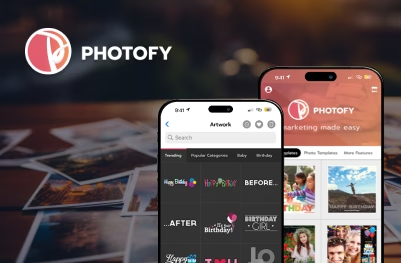- Developers
- Developer Blog
- AI Software Development
- How to Use ChatGPT for Software Documentation
profile

By Faiza Khalid
Verified Expert
6 years of experience
Faiza is a CIS engineer with a keen interest in software development, AI research, and technology writing.
Are you wondering how to leverage ChatGPT for software documentation?
ChatGPT by OpenAI is powered by generative artificial intelligence. The advanced chatbot is making waves by offering applications in all business domains.
Likewise, software development teams are also interested in how ChatGPT can assist them with application design, code analysis, software documentation, etc.
Developing a ChatGPT-powered software documentation application requires a deep understanding of large language models, generative machine learning, prompt engineering, AI development frameworks, etc.
If you do not have a professional team with this relevant expertise to take on the complex task, then submit a request for a complimentary discovery call, and one of our tech account managers who managed similar projects will contact you shortly.
One of the main benefits of good software documentation is better collaboration between team members.
As 94% of survey respondents believe it is important to hire employees that can work in teams, let’s see how you can use ChatGPT to write effective software documentation that can help your developers, designers, testers, and project managers with better project outcomes.
ChatGPT for Software Documentation
ChatGPT offers many capabilities that technical writers can utilize to undertake their tasks effectively throughout the documentation development lifecycle (DDLC) and achieve business goals effectively.
A few ways technical writers can tap into generative AI capabilities via ChatGPT are as follows:
Content Creation
Technical writers sit with product developers to understand existing and upcoming software features. After the knowledge transfer session, writers spend a lot of time drafting the content. They perform the following tasks:

Get a complimentary discovery call and a free ballpark estimate for your project
Trusted by 100x of startups and companies like
- Understand content flow;
- Generate content outline;
- Design document structure;
- Understand business terminology;
- Create support articrafts which can be requirements documentation, design files, test plans, user manuals, release notes, code inline documentation, etc.
Your technical writers can utilize ChatGPT to automate these tasks to a great extent. Writers provide ChatGPT with a prompt to create a document outline, suggest relevant content, etc.
ChatGPT is trained on billions of lines of text data available on the open internet. It can generate text in paragraphs on almost any topic.
After giving the accurate prompt and receiving ChatGPT text output, your writers can tweak critical business terms, add high-value content, and reduce the overall time to generate documentation.
Types of documentation that ChatGPT can help generate content for include the following:
- Generate code comments: Your developers can provide software code snippets (functions, classes, etc.) to ChatGPT as prompts, and ChatGPT can automatically generate comments to make code more understandable for other team members.
- Create API documentation: Your development team can create initial API documentation for your software application, explaining API request/response parameters, outputs from various API endpoints, usage examples, etc.
- Write design documents: It can assist in outlining application design documents, like software architecture and design patterns.
- Document code changes: Your development team can use ChatGPT for documenting code changes, including version control descriptions, code commit messages, etc.
- Document DevOps processes: ChatGPT can also assist your development team in writing documentation for DevOps processes, like descriptions of deployment stages, server configuration guidelines, automation scripts, etc.
- Write user manuals: ChatGPT can assist your writers in creating user manuals with guidelines for end users on how to use the software.
- Automate documentation updates: ChatGPT can be used to automate updates in documentation when there are code changes, feature additions, etc.
- For example, for feature enhancements, ChatGPT can be given a prompt, including the feature description, why the feature was added, how it will improve software, etc.
Content Enhancement
While ChatGPT can be used for the initial documentation work, like generating outlines and sample content, it can be a useful tool for content enrichment also.
Content enrichment consists of the following:
- Peer reviews: Reviews from peers on documentation can be given to ChatGPT as prompts. ChatGPT can enhance the content per these reviews;
- Editor notes: Editor reviews can also be used by ChatGPT for further content enrichment, such as a change in tone, addition of a certain point, making the language more inclusive, etc.
- SEO optimization: ChatGPT can be used to suggest optimal content titles, SEO keywords, meta descriptions, etc., to make content more optimized for the search engine without much manual work from writers.
Customer Feedback Analysis
If a document receives huge feedback from users, ChatGPT can help writers go through it efficiently. Instead of analyzing huge feedback text manually, your writers can use ChatGPT to:
- Categorize feedback under different titles for better understanding;
- Improve content based on user feedback, etc.
Customized Product Documentation Generation
You can train and fine-tune the GPT model on your software product data. With enough understanding of your software application, ChatGPT can be used to automatically generate content on your product content, such as information on feature enhancements, updates on bug fixes, etc.
With the initial draft done, your writers can enhance the content with more sophisticated product information, incorporate customer reviews, etc. Marketing teams can also perform automatic content enhancement like SEO optimization.
The shorter turnaround time of software documentation generation helps achieve other business goals efficiently, such as faster traffic generation on product pages, faster sales cycle, and thus an increase in business revenue.
Using ChatGPT for Software Documentation Generation
Your writers would go through the following steps to use ChatGPT for software documentation:
Define the scope of the software document
You must have a clear understanding of the documentation’s purpose and scope. Identify the target audience and the documentation requirements with the level of required detail.
With a clear idea of the end goal, you can use ChatGPT for software documentation that meets specific requirements.
You can write a prompt outlining the purpose of the content and the intended audience to engage ChatGPT. For example:
Write a guide on using [software name] for beginner users, including installation, execution, and basic features.
Draft an outline
Creating an outline will help you write a software document that covers all important aspects. For example, you can write a prompt for ChatGPT to draft an outline as:
Hire expert AI developers for your next project
1,200 top developers
us since 2016
Generate an outline for [API name] documentation that covers the following [list of endpoints].
You can then review the content outline, make modifications, and with a complete outline in hand, you can start producing content for each section.
Generate content
Now use ChatGPT to create sample content for each section. Write prompts with complete instructions to generate content with all the relevant information.
For example, you can write a prompt for the introduction section as:
Write an introduction to [technology name], explaining its popular use cases with relevance to [industry name].
You can also break sections into subsections to get elaborate information from ChatGPT and make content generation more manageable.
Refine the generated content
It is important that you revise the content generated by ChatGPT. Check for inconsistencies and inaccuracies.
You might want to add more details to some sections. You might want more clarity in some text. You can again use ChatGPT for content revisions.
For example, you can write a prompt to refine ChatGPT text as follows:
Improve the clarity of this paragraph with more details on [a specific topic/term].
Add visuals
ChatGPT cannot create visuals but can help write descriptions and captions for images. Software documentation contains visuals like flowcharts, tables, etc.
You can provide a prompt to generate text that explains the diagram, such as follows:
Write a description for a flow chart explaining the [algorithm name] and steps of the algorithm [list steps].
Once you have a clear understanding of visuals, you can design the graphics yourself or collaborate with a designer to create visuals that complement the written description.
Add glossary, references, etc.
Software documentation usually includes industry-specific jargon that all users might not be familiar with. You can make your software documentation more accessible by adding a glossary of terms, references, appendices with additional information, etc.
ChatGPT can help you here. You can provide ChatGPT prompts like the following:
Create a glossary of technical terms related to [topic name].
Hire expert AI developers for your next project
or
Write an appendix on [supplementary topic name] providing additional information to readers of software document on [main topic name].
Edit and review the document
ChatGPT can help you write high-quality content quickly on various topics and in different structures and tones. However, it is an AI language model at the end of the day. It provides responses based on the training data available on the internet till 2021. There is room for biases and inaccuracies. Your writers need to make sure the content is free from any mistakes.
Review content so there are no factual inconsistencies, grammatical errors, etc. Forward the document to editors and other subject matter experts for review and effectively incorporate the feedback so that your document is complete, polished, and coherent.
Planning to Use ChatGPT for Software Documentation?
ChatGPT applications for language-related tasks are many, including summarization, content writing, proofreading, and machine translation.
Technical writers in the tech industry already use several documentation tools to make their workflow easy and efficient, and AI-powered ChatGPT could further improve their productivity tremendously.
Open AI offers its language models to leverage them for custom business use cases. These GPT models can be trained on business-specific data to give accurate results and integrate seamlessly with customized business workflows.
If you plan to utilize ChatGPT for custom business specifications, such as personalized software product documentation, you would need excellent expertise in various skills, such as advanced AI development, natural language processing, Python programming language and frameworks, large language models, etc.
Software developers with these skills and expertise can ensure complex custom ChatGPT application project is successful. If you do not have such talent on your team, DevTeam.Space can help you via its field-expert software developers community.
All our developers are vetted for their high-quality skills in cutting-edge technologies and follow an AI-powered agile process that helps with the effective management of complex software development projects.
If you want to know more about how our developers can help you build an innovative software application with dedicated technical managers, leave your initial project specifications via this quick form.
One of our account managers with experience in building similar software solutions will get back to you as soon as possible to discuss everything from project planning to developers onboarding and answer your questions.
FAQs
ChatGPT could be an invaluable tool that helps writers in various documentation activities, like
Draft creation;
Document changelogs;
Answer queries;
Write FAQs;
Perform semantic search;
Create engaging tutorials, etc.
To use ChatGPT based on generative AI technology for software documentation, follow these steps:
Define documentation purpose and intended audience;
Access ChatGPT API or platform;
Prepare prompts with clear instructions on the type of content you want, and give specific context;
Set response length;
Review generated content and refine it to fit your specific documentation requirements;
Use human expertise, such as peer review, customer feedback, and subject matter expert opinion, to enhance the content, etc.
ChatGPT can help software developers with the following and more:
Write code snippets;
Provide suggestions on a code snippet;
Assist in code review for quality assurance;
Help with code refactoring;
Write boilerplate code snippets;
Generate code comments and inline documentation;
Assist with technical writing projects, etc.

Alexey Semeney
Founder of DevTeam.Space
Hire Alexey and His Team To Build a Great Product
Alexey is the founder of DevTeam.Space. He is award nominee among TOP 26 mentors of FI's 'Global Startup Mentor Awards'.
Alexey is Expert Startup Review Panel member and advices the oldest angel investment group in Silicon Valley on products investment deals.


